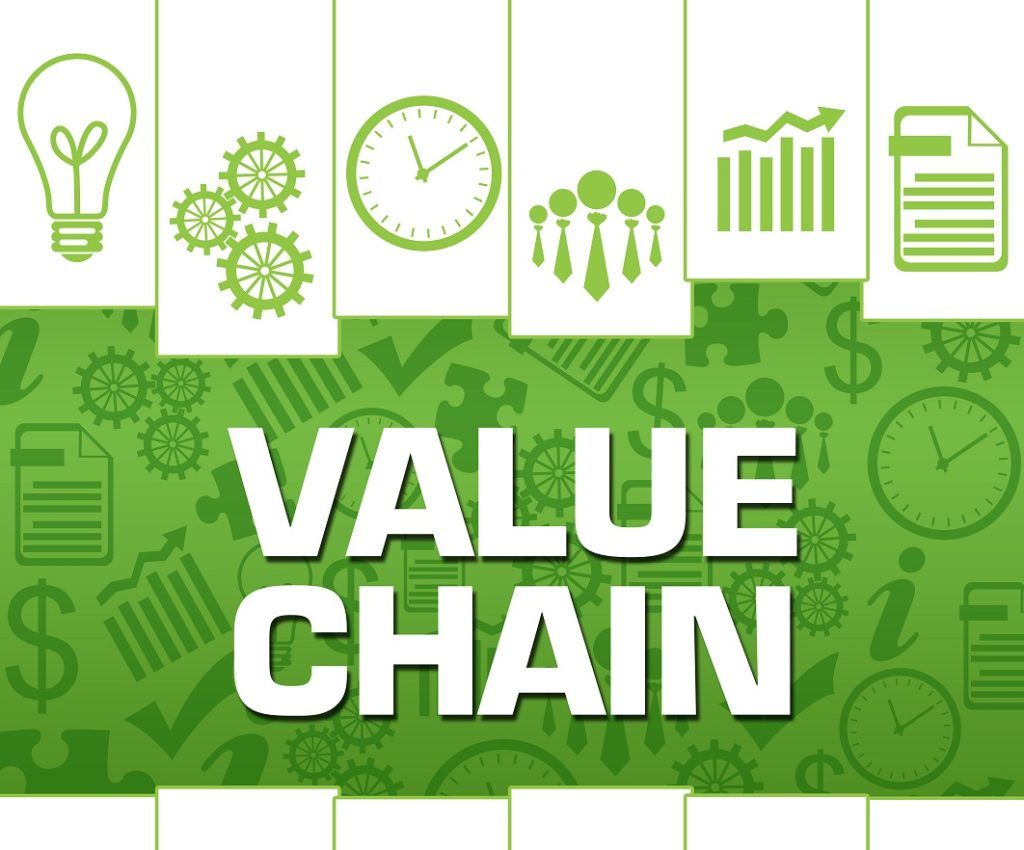Value Chain: Optimizing Business Processes for Competitive Advantage
What is the Value Chain?
The Value Chain refers to the sequence of activities that a company performs to deliver a product or service to the market. Each activity in the value chain adds some form of value, whether it’s creating a product, improving its quality, marketing it, or delivering it to customers. By optimizing each step, businesses can reduce costs, increase quality, and enhance customer satisfaction, leading to greater profitability and a stronger competitive position.
Porter divided the https://roman-business.com into two main categories: primary activities and support activities.
Primary Activities
Primary activities are directly involved in the creation and delivery of a product or service. These activities are crucial to the value creation process and can have a direct impact on customer satisfaction.
-
Inbound Logistics
- Inbound logistics involve the processes related to receiving, storing, and distributing raw materials or inputs required for production. Efficient inbound logistics ensure that the necessary materials are available when needed, without incurring unnecessary costs or delays.
- Examples: Inventory management, supplier relationships, and transportation of raw materials.
-
Operations
- Operations are the activities that transform raw materials into finished products or services. This includes manufacturing, assembly, testing, and packaging. Improving operational efficiency helps in reducing production costs and enhancing product quality.
- Examples: Production processes, quality control, and packaging.
-
Outbound Logistics
- Outbound logistics is concerned with the distribution of the final product to customers. This includes warehousing, order fulfillment, and the transportation of finished goods to retailers or customers. Effective outbound logistics ensure timely delivery and lower transportation costs.
- Examples: Distribution channels, delivery management, and inventory control.
-
Marketing and Sales
- Marketing and sales activities focus on promoting the product or service and convincing customers to purchase it. These activities help build brand awareness, generate demand, and create customer loyalty.
- Examples: Advertising, market research, sales strategies, and promotions.
-
Service
- After-sales services are essential for maintaining customer satisfaction and fostering long-term relationships. Service activities include customer support, warranties, repairs, and returns. Effective service operations can help differentiate a company from competitors and encourage repeat business.
- Examples: Customer support, installation, maintenance, and training.
Support Activities
Support activities provide the necessary foundation and resources for the primary activities. While they do not directly create value, they enable and enhance the primary activities, making them more efficient and effective.
-
Firm Infrastructure
- Firm infrastructure encompasses the company’s general management, strategic planning, finance, legal, and IT systems. A strong infrastructure ensures that the company can operate efficiently and make informed decisions.
- Examples: Company leadership, management structure, corporate governance, and IT systems.
-
Human Resource Management
- Human resource management involves recruiting, training, and retaining skilled employees. A company’s workforce plays a vital role in ensuring that primary activities are carried out efficiently and effectively.
- Examples: Recruitment, training, employee development, compensation, and performance management.
-
Technology Development
- Technology development focuses on innovation and the implementation of new technologies to improve products, processes, or services. Technology can drive efficiencies, reduce costs, and enhance the customer experience.
- Examples: Research and development (R&D), product innovation, IT systems, and automation.
-
Procurement
- Procurement involves sourcing and acquiring the necessary inputs (raw materials, services, or equipment) to support primary activities. Effective procurement ensures that the company has access to quality materials at competitive prices.
- Examples: Supplier relationships, sourcing strategies, and purchasing processes.
How Businesses Can Use the Value Chain to Gain a Competitive Advantage
By analyzing each stage of their value chain, businesses can identify opportunities to optimize their operations, reduce costs, and increase customer satisfaction. Here are some ways organizations can leverage the value chain to build a competitive advantage:
1. Cost Leadership
- Companies can use their value chain to become cost leaders in their industry. By optimizing internal processes such as production, logistics, and procurement, businesses can lower their overall costs, allowing them to offer competitive prices to customers.
- Example: A company could reduce costs by automating certain manufacturing processes, optimizing supply chain management, or negotiating better contracts with suppliers.
2. Differentiation
- A business can differentiate itself by creating superior products or services that offer added value to customers. Enhancing quality at every stage of the value chain—such as improving manufacturing processes, offering exceptional customer service, or investing in R&D—helps businesses create unique value that customers are willing to pay a premium for.
- Example: A luxury brand could focus on the quality of materials, craftsmanship, and customer experience throughout its value chain, ensuring that every aspect of the product is perceived as high-end and exclusive.
3. Innovation
- By investing in research and development (R&D) or adopting cutting-edge technologies, companies can innovate within their value chain and create breakthrough products or services. Innovation can lead to improved processes, new product features, or entirely new products that satisfy unmet customer needs.
- Example: A technology company may invest heavily in R&D to develop new software that improves the efficiency of its products, allowing it to outperform competitors.
4. Operational Efficiency
- Businesses can use the value chain to enhance their operational efficiency. By optimizing operations such as production, logistics, and inventory management, companies can reduce waste, lower costs, and deliver products more quickly to customers.
- Example: A retailer could streamline its distribution network to ensure faster deliveries and reduce storage costs, improving both cost-efficiency and customer satisfaction.
5. Strategic Partnerships
- Companies can strengthen their value chain by forming strategic alliances with suppliers, distributors, or service providers. By collaborating with partners that offer complementary strengths, businesses can gain access to new technologies, expertise, or distribution channels that enhance their value proposition.
- Example: A food manufacturer might partner with a logistics provider to improve its distribution capabilities, enabling faster deliveries and better customer service.
Value Chain Analysis: Steps for Implementation
To effectively implement a value chain strategy, businesses can conduct a value chain analysis. This process involves examining each activity within the value chain to identify areas for improvement and optimization.
1. Map Out the Value Chain
- Begin by identifying all the activities in your organization’s value chain, including both primary and support activities.
- Evaluate each activity in terms of cost, efficiency, and potential value added to the customer.
2. Assess Internal Strengths and Weaknesses
- Analyze each activity in the value chain to determine where your company has strengths or weaknesses.
- Identify areas where you can reduce costs, enhance customer experience, or improve operational efficiency.
3. Benchmark Against Competitors
- Compare your value chain to that of competitors to identify areas where they may have a competitive advantage.
- Benchmarking helps uncover opportunities for improvement and provides insight into industry best practices.
4. Identify Opportunities for Improvement
- Based on the analysis, identify areas where you can streamline operations, cut costs, enhance product quality, or improve customer service.
- Focus on areas that align with your strategic objectives, whether that’s cost leadership, differentiation, or innovation.
5. Implement Changes and Monitor Progress
- After identifying opportunities for improvement, implement changes to optimize the value chain. This may involve process redesign, new technology adoption, or changing supplier relationships.
- Regularly monitor the results and adjust strategies as necessary to ensure that value is continuously added at each stage of the value chain.
Benefits of Value Chain Optimization
Optimizing the value chain offers a wide range of benefits to businesses:
- Cost Reduction: Streamlining processes and improving efficiency can lower operational costs, increasing profitability.
- Improved Customer Experience: A well-optimized value chain can lead to faster deliveries, higher product quality, and better customer service.
- Increased Competitive Advantage: Businesses that effectively manage their value chain are better positioned to outperform competitors through cost leadership or differentiation.
- Sustainability: Optimizing the value chain can lead to more sustainable practices, such as reducing waste, lowering energy consumption, and improving resource management.
Conclusion
The value chain is a powerful framework for understanding how businesses can create and deliver value to customers. By analyzing and optimizing each activity within the value chain, companies can reduce costs, improve product quality, enhance customer satisfaction, and gain a competitive advantage. Whether focusing on cost leadership, differentiation, or innovation, organizations that embrace value chain optimization are better positioned for long-term success in today’s dynamic business environment.












